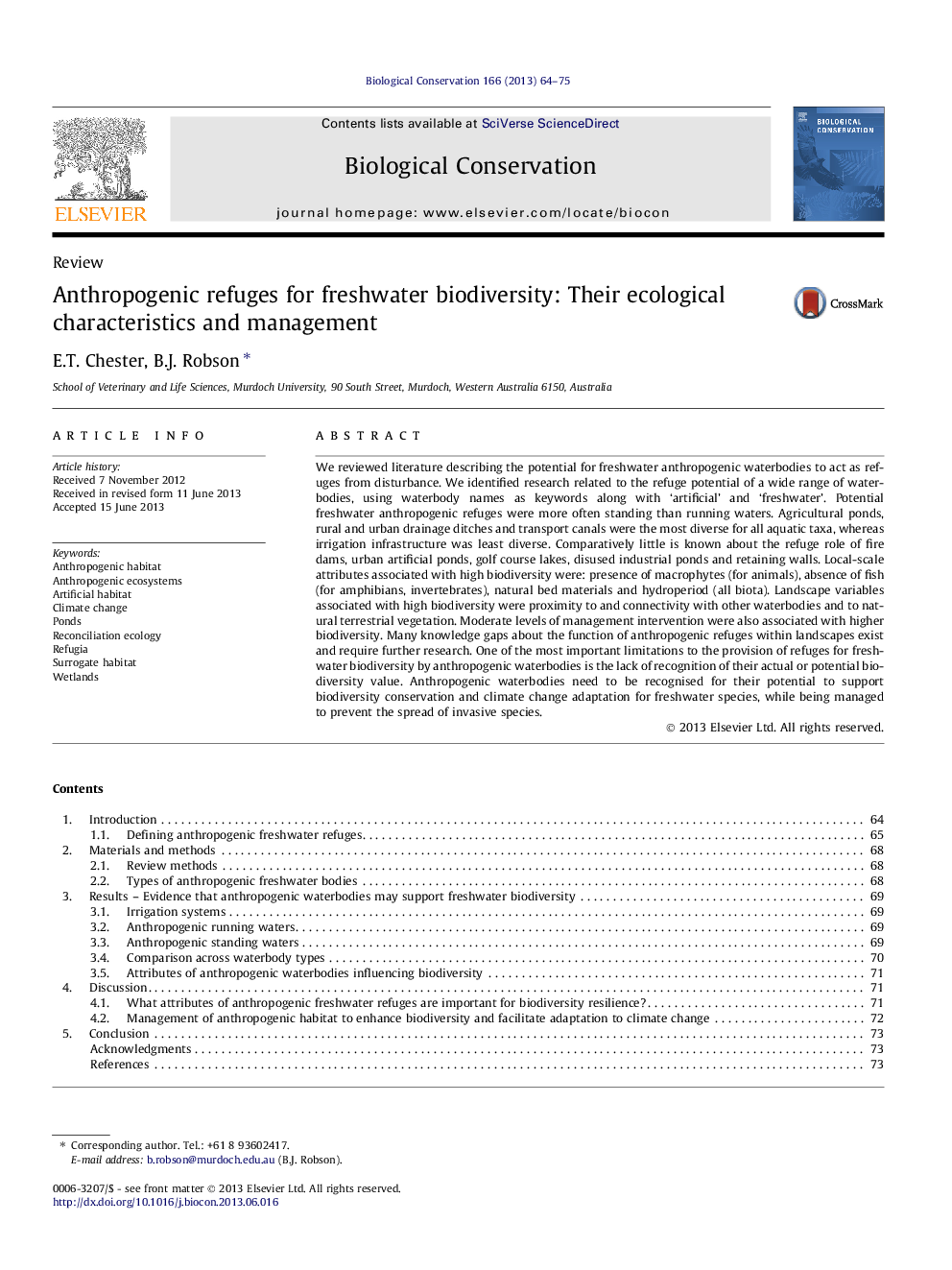| Article ID | Journal | Published Year | Pages | File Type |
|---|---|---|---|---|
| 6300749 | Biological Conservation | 2013 | 12 Pages |
Abstract
We reviewed literature describing the potential for freshwater anthropogenic waterbodies to act as refuges from disturbance. We identified research related to the refuge potential of a wide range of waterbodies, using waterbody names as keywords along with 'artificial' and 'freshwater'. Potential freshwater anthropogenic refuges were more often standing than running waters. Agricultural ponds, rural and urban drainage ditches and transport canals were the most diverse for all aquatic taxa, whereas irrigation infrastructure was least diverse. Comparatively little is known about the refuge role of fire dams, urban artificial ponds, golf course lakes, disused industrial ponds and retaining walls. Local-scale attributes associated with high biodiversity were: presence of macrophytes (for animals), absence of fish (for amphibians, invertebrates), natural bed materials and hydroperiod (all biota). Landscape variables associated with high biodiversity were proximity to and connectivity with other waterbodies and to natural terrestrial vegetation. Moderate levels of management intervention were also associated with higher biodiversity. Many knowledge gaps about the function of anthropogenic refuges within landscapes exist and require further research. One of the most important limitations to the provision of refuges for freshwater biodiversity by anthropogenic waterbodies is the lack of recognition of their actual or potential biodiversity value. Anthropogenic waterbodies need to be recognised for their potential to support biodiversity conservation and climate change adaptation for freshwater species, while being managed to prevent the spread of invasive species.
Related Topics
Life Sciences
Agricultural and Biological Sciences
Ecology, Evolution, Behavior and Systematics
Authors
E.T. Chester, B.J. Robson,
